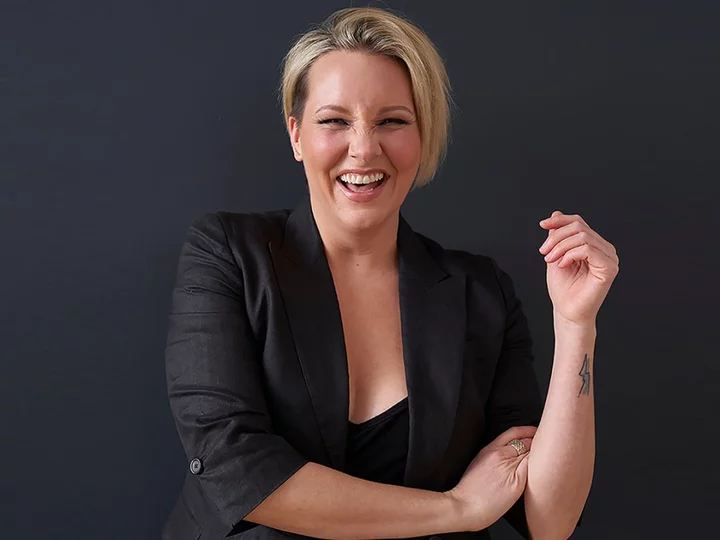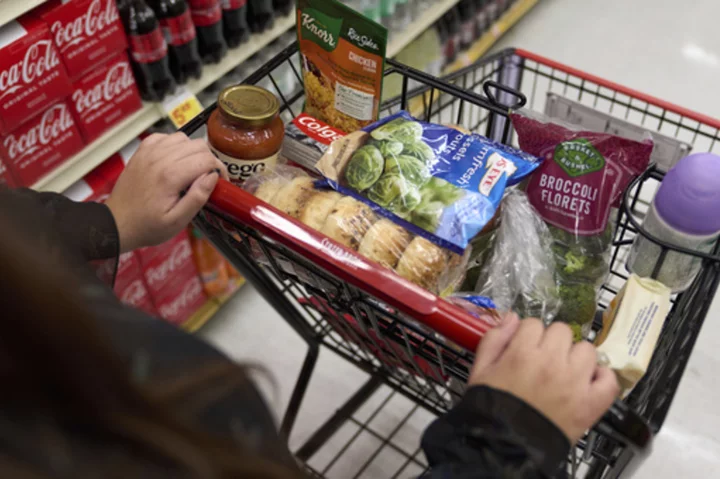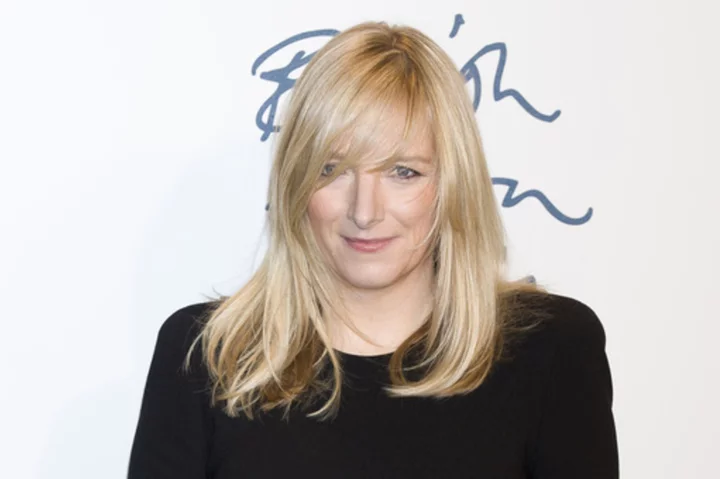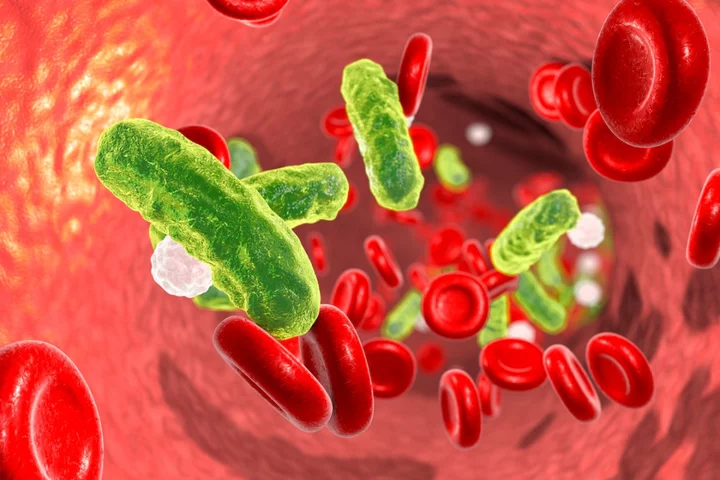
‘It can be hard when your kids leave the nest,’ mother says as study finds parents want their children back
Two-thirds of parents whose children have left home would gladly have them back again. A study with 2,000 mums and dads whose children have left said they would like their children to live no further than 14 miles away from them on average. But 90 per cent were keen to support their child’s dream and let them have their own adventure. As a result, 53 per cent travelled with them for their moving-in day, and 15 per cent stayed in a hotel to ensure they were settled. For 14 per cent of those, this stay ended up being as long as a week to ensure their child was okay. The research was commissioned by Premier Inn, which has created a downloadable ‘Empty Resters’ guide in partnership with content creator and parent, Tracey Lea Sayer, aged 51, to help parents through this change. She said: “It can be hard when your kids leave the nest. “Driving them up to university for the first time, for example, is the last big thing parents get to do for them before they become an adult. ”Our tips cover lots of the issues parents will face when helping kids leave the nest. “From packing advice to making sure kids have essential life skills like how to use a washing machine or plan a food shop, it’s all here. “Helping to focus on practical matters can be really beneficial for parents who might feel overwhelmed with emotion – and it can also really help them feel useful to their kids.” The study also revealed 36 per cent proceeded to redecorate their child’s bedroom after they’d shipped out. But 28 per cent of these simply spruced up the room, making it more comfortable, for when they come back for the holidays. It also emerged kids are slightly more likely to move out and stay local than move a good distance away (57 per cent compared to 41 per cent). And 29 per cent of parents find their children come home weekly. Most kids moved away for university (32 per cent), but 29 per cent moved in with a partner and 10 per cent got their own place with friends. But while 65 per cent would be happy to have their kids move back in with them if needed, 45 per cent said their relationship with their child has improved since they left. However, kids shouldn’t expect a free ride – as 55 per cent of the parents polled, via OnePoll, would be expecting some cash in rent every month. And their child moving out has led to 28 per cent travelling more, 26 per cent having more disposable income and 23 per cent eating out more. ‘A new chapter in her life’ Tracey said her eldest daughter Franke left to go to University last year and said one thing that brought them closer was “preparing her for her university life,” which helped them “bond over the little things that signified a new chapter in her life.” Tracey added: “From the obligatory shopping trip for essential bits and bobs, to teaching her how to make the perfect scrambled eggs and navigate laundry instructions. “Buying essentials in advance made us both feel more prepared, it meant Frankie and I could spend some quality time together too. “Equipped with a checklist of essentials well in advance, the daunting moving-in date had arrived. “Having already familiarised myself with the layout of the city, the location of her accommodation and the proximity of nearby hotels for visits during term time, I found a certain sense of comfort when we arrived in her university city, which is a fair distance from home. “Learning these in advance put my mind to ease and made the moving process a lot smoother.” Here are some top tips from Tracey for parents who are finding it hard after their children moved away: 1. Spend quality time with your other kids: When Frankie left for university, I got to spend real quality time with my younger son. He is quieter and doesn’t need as much attention but now he has me all to himself. 2. Create a New Routine: Establish a new daily routine that fits with your new schedule. Don’t think you will have loads more free time though. The admin that comes with having a child at Uni is relentless. Your ‘To do’ list won’t get any shorter. Student housing, finance and travel all need organising. 3. Focus on Self-Care: Prioritise you for once. Your physical and emotional well-being is important. Try to exercise, eat well and de-stress. 4. Connect with Other Parents: Sharing your experiences can be hugely comforting. I chat to the ladies at my exercise class who are all going through the same thing. We share notes, get it all off our chests and have a right good laugh about all the things the kids are getting up to. 5. Embrace the three Stages: Grief, relief and joy. Of course, you are going to be sad and grieve when your child leaves home, but you will get used to it and weirdly quite quickly. There is a sense of relief once they have settled in and made new friends. It took about three months for it to not feel strange just coming home to the boys Read More Schoolgirls struggle to access basic period protection, research suggests Cost of living means parents have less time to play with children, according to poll When is Freshers’ Week 2023 and how can I make the most of it? Meghan Markle gives children a shoutout as she joins Prince Harry at Invictus Games How many children does Elon Musk have? Single woman’s day in a life video is met with vitriol after going viral
2023-09-13 22:54

A fishing vessel in Greenland will try to free a cruise ship that ran aground with 206 people
A fishing vessel will attempt to use the high tide to pull free a Bahamas-flagged Norwegian cruise ship carrying 206 people that has run aground in northwestern Greenland
2023-09-13 20:25

Hudson River swimmer deals with fatigue, choppy water, rocks and pollution across 315 miles
The Hudson River is 315 miles from its source in the Adirondack Mountains to New York City
2023-09-13 12:28

Virginia candidate who livestreamed sex videos draws support from women, Democratic leader
A Democratic Virginia legislative candidate is moving forward with her campaign Tuesday after her race was rattled by the revelation that she and her husband livestreamed themselves having sex
2023-09-13 07:50

Fashion executive and breast cancer survivor uses her NYFW show to raise awareness
One brand creator used her runway to raise awareness for breast cancer and encourage women to support their bodies during this year’s New York Fashion Week. As a breast cancer survivor herself, Dana Donofree, who was diagnosed at 27, previously struggled to find the perfect fit when it came to intimates after her mastectomy. The mold and structure of “regular” bras were not only incompetent but seemingly “awful” and “ugly,” according to the designer. That was until she developed the perfect configuration for her own brand, AnaOno. Speaking to Elle, Donofree recounts how her former frustration with limited lingerie options led to the launch of her company. “After removing both my breasts to treat my disease and reconstructing them, I found that ‘regular’ intimates no longer fit. What was available to me instead were these awful, ugly, matronly bras,” she explained. “I knew that we could do better! Women undergoing cancer treatment are already dealing with so much. They don’t also need to deal with hating their clothes. So I started figuring out a solution.” A designer and innovative problem solver, Donofree examined the necessary fit for the recovery stages associated with breast cancer survivors who’ve endured implants, mastectomies, and unilateral removals. No matter how far along a woman is in their individual journey post-diagnosis, AnaOno offers a range of picks from nighties to breathable leisurewear. “Something I’ll never compromise on is absolute inclusion,” the creator continued. “Whether you have two breasts, one breast, no breasts, or new breasts…we’ll make it work for all of it.” With that being said, Donofree ensured her size range varied, with the largest available option being a 3X. Donofree’s desire to design her brand supporting breast cancer survivors was also about inspiring other women, through a fuse of agency, style, ease, and motivation in keeping a healthy body and mind. This also meant straying from the “pink-washing” that is often associated with the disease. The fashion executive noted: “As a survivor myself for 13 years, I can say that there have been times when I’ve been really mad at the ‘pink-washing’ of breast cancer awareness. It felt very exploitive to me, you know, to have your pain and ‘resilience’ put in a marketing campaign!” And that’s exactly what she avoided in this year’s runway display during fashion week in the Big Apple. Inside a Lower East Side church, Donofree’s show titled “(R)Evolution” unfolded negligee versatility to promote properly fitting garments and breast cancer awareness. “I didn’t want to abandon the use of pink altogether, because breast cancer research and awareness saves lives. If we can impact research and find more ways to treat this disease, we can get more time with the ones we love,” the fashion mogul remarked. “And if we can impact awareness, we can ensure people get diagnosed as fast as possible, which leads to many more treatment options.” “We’re finally awakening to the fact that cancer and disease is an issue that’s linked to pollution and environmental damage,” she continued. “Fashion as a whole needs to accept responsibility to create a better earth and healthier humans, because what touches your skin gets absorbed by your skin. Using quality fabric matters a lot to me, and to other fashion designers. And it also matters greatly to cancer patients.” Donofree enlisted the help of #CancerCulture, a patient-led nonprofit organisation dedicated to spreading awareness in creative avenues, to co-produce the show. The brand’s display will also lead to a donation of $25,000 to the Breast Cancer Research Center, with hopes to reach a larger sum of $50,000. In Donofree’s experience, she’s concluded that the right bra will lead to “a better life”. “It’s not just about your body – it’s about your story,” AnaOno’s website reads. “No matter who you are, no matter your story, we believe you should have a bra that fits your unique shape.” Read More Ralph Lauren, a son of the Bronx, takes over Brooklyn in lavish return to NY Fashion Week Proenza Schouler debut effortlessly cool looks at NYFW Tory Burch deconstructs classic style in new NYFW collection
2023-09-13 06:21

More about culture than competition, HBCU classics are like a family reunion in the Black community
HBCU college football classics have become a staple in the Black community
2023-09-13 01:21

The 'science of reading' swept reforms into classrooms nationwide. What about math?
As American schools work to turn around math scores that plunged during the pandemic, some researchers are pushing for more attention to a set of research-based practices for teaching math
2023-09-13 00:52

Child poverty in the US jumped and income declined in 2022 as coronavirus pandemic benefits ended
Child poverty in the United States more than doubled and median household income declined last year when coronavirus pandemic-era government benefits expired and inflation kept rising
2023-09-13 00:28

Josh Duhamel and wife Audra Mari announce they’re expecting first baby together
Josh Duhamel and his wife, Audra Mari, are welcome their first child together. The couple, who officially tied the knot in September 2022, shared a joint post to Instagram on 11 September to reveal that they’re expecting. The post included a picture of a baby’s ultrasound, as it was placed next to a white flower on a table. Mari simply captioned the post with: “Baby Duhamel coming soon,” along with a white heart emoji. Many famous faces took to the comments to congratulate the pair, including Duhmael’s ex-wife, Fergie, with whom he shares a 10-year-old son, Axl. “I am truly happy for you guys,” the singer commented. “Axl can’t wait to be a big brother.” “Congratulations! The most beautiful news! I’m thrilled for you both!!” The Girl Next Door star Elisha Cuthbert added. Former Bachelorette star Clare Crawley wrote: “I was just thinking this morning about you!!” Duhamel, 50, and Mari, 29, were first romantically linked in 2019, nearly two years after the actor announced his split from Fergie. In January 2022, the Shotgun Wedding star took to Instagram to reveal that he and Mari were engaged. “It’s on!! She found a message in a bottle that washed ashore and said YES!!” he wrote in the caption, alongside a photo of him and his partner, as she was holding a paper that read: “Audra Diane Mari, Will You Marry Me?” After tying the knot in September 2022, Mari went on to praise her relationship with her now-husband. “Everyone told me that after you get married you feel different,” she told Us Weekly, at the time. “To be honest, I never really believed them and I thought it would feel the same way it’s felt being with Joshua for the last three years. But it’s much different! I feel secure.” Last year, the couple also made headlines when they poked fun at their 21-year age difference. While attending the Casamigos Halloween party in Beverly Hills, California, Mari dressed up as 26-year-old Anna Nicole Smith, while Duhamel dressed up as her 89-year-old husband, billionaire J Howard Marshall. Mari went on to post a video on Instagram of her partner in costume, as he was wearing a bald cap. In the caption, she quipped: “What age difference? Ladies and gentlemen Anna Nicole Smith & J. Howard Marshall.” This wasn’t the first time Duhamel has poked fun at his and his wife’s age gap. During an appearance on The Kelly Clarkson Show in October 2022, he recalled how he had to go to the emergency room for a back injury, mere hours before his wedding. While he said he no longer had the pain during his big day, after going to the doctor, his back issues continued the next day. “The next morning, after the wedding, [I] couldn’t get out of bed again,” Duhamel said. “[My wife’s] like, ‘Oh my God. Everything is fine here. This is, like, the first day of my marriage, and I’m wheeling my husband around in a wheelchair.’ I’m already way older than she is.” “It wasn’t a great start,” he quipped. “But, I was like: ‘Babe, for better or worse.’” Read More Our weekend arts and culture picks, from The Fabelmans to Happy Valley Josh Duhamel and Audra Mari poke fun at their age gap by channeling Anna Nicole Smith and husband for Halloween Jennifer Lopez mysteriously wipes Instagram account and goes dark on other social channels Mom says she was shamed for teaching infant son to take pride in his appearance Kelly Osbourne opens up about weight loss journey Hairspray star reveals she went into labour while attending Beyoncé concert
2023-09-12 22:56

Sarah Burton, who designed Kate's royal wedding dress, to step down from Alexander McQueen
The fashion designer who created the wedding dress of Kate Middleton, Princess of Wales, is stepping down as creative director at Alexander McQueen after two decades at the brand, luxury group Kering said
2023-09-12 08:49

World Sepsis Day: What is the condition and its symptoms?
Sepsis is an illness that affects nearly 50 million people worldwide each year, with around 11 million deaths attributed to the condition. In the United States, at least 1.7 million adults in the US develop sepsis annually, and nearly 270,000 die as a result, the Centres for Disease Control and Prevention (CDC) says. It affects 245,000 people in the UK each year, with around 48,000 deaths, according to the UK Sepsis Trust. World Sepsis Day commemorated on 13th September every year, strives to raise global awareness of the life-threatening condition. The day is seen as “an opportunity for people worldwide to unite in the fight against sepsis,” the Global Sepsis Alliance says. Here is everything you need to know about sepsis: What is sepsis? Sepsis Research says when the condition strikes, the immune system “overreacts” and begins to attack the infection and everything else around it “including the body’s own tissues and organs.” “Any type of infection — bacterial, viral or fungal — can lead to sepsis,” it adds. When sepsis occurs, it can cause inflammation and cause blood clotting around the body, if it does not get treated, it can result in death, organ failure and tissue damage, CDC says. Sepsis cannot be caught from another person, the NHS explains. What are the symptoms? The World Health Organisation (WHO) explains that the condition is a “medical emergency,” so if you think a person is exhibiting signs of sepsis or if you are showing signs – make sure you call 999 or go to the emergency room immediately. According to WHO, common signs and symptoms include: • Fever or low temperature and shivering • Confusion • Difficulty breathing • Clammy or sweaty skin • Extreme body pain or discomfort • High heart rate, weak pulse or low blood pressure • Low urine output Symptoms in children include: • Fast breathing • Convulsions • Pale skin • Lethargy • Difficulty waking up • Feeling cold to touch What are the causes? The Mayo Clinic says any type of infection can lead to sepsis and those that more commonly cause the condition include infections of: • Lungs, such as pneumonia • Kidney, bladder and other parts of the urinary system • Digestive system • Bloodstream • Catheter sites • Wounds or burns “Sepsis often presents as the clinical deterioration of common and preventable infections such as those of the respiratory, gastrointestinal and urinary tract, or of wounds and skin. Sepsis is frequently under-diagnosed at an early stage - when it still is potentially reversible,” the Global Sepsis Alliance says. Who is most at risk? The people most at risk of the condition, according to Mayo Clinic, are: • People with lower immune response, such as those being treated for cancer • People with human immunodeficiency virus (HIV). • People with chronic diseases such as diabetes kidney disease or chronic obstructive pulmonary disease (COPD). • people who are in intensive care or longer hospital stays. • People over the age of 65 • Infants How many cases are there globally? The WHO says a scientific publication estimated that in 2017 there were 48.9 million cases and 11 million sepsis-related deaths worldwide, which accounted for almost 20 per cent of all global deaths. That same year, almost half of all global sepsis cases occurred among children with an estimated 20 million cases and 2.9 million global deaths in children under 5 years of age. How can it be prevented? The Global Sepsis Alliance says the best to to avoid sepsis is by preventing infection. This can be done by undergoing vaccinations, ensuring that you only come into contact with clean water, washing your hands properly and if you are giving birth - making sure it is in a clean and sterilised environment. Can sepsis be treated? Sepsis can be treated with appropriate treatment such as antibiotics – this should be given as soon as possible. The CDC says sometimes “surgery is required to remove tissue damaged by the infection”. “Antibiotics are critical tools for treating life-threatening infections, like those that can lead to sepsis,” the CDC adds. Read More 5 things everyone needs to know about eczema 13 potential cancer symptoms you should get checked out How can I improve my teenager’s low mood? Duran Duran’s Andy Taylor says he’s ‘asymptomatic’ after end-of-life diagnosis Nine hours of parallel surgery: how Britain’s first womb transplant was carried out Bursts of activity that make you huff and puff ‘linked to reduced cancer risk’
2023-09-12 03:20

Dollymania: When Dolly the Sheep Created a ’90s Media Sensation
Dolly the sheep was the first animal cloned from a single adult cell—and raised a lot of questions about the future of human cloning.
2023-09-12 02:22
